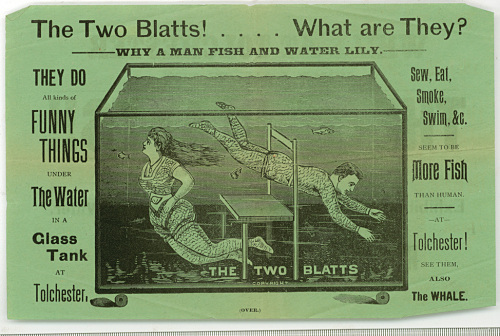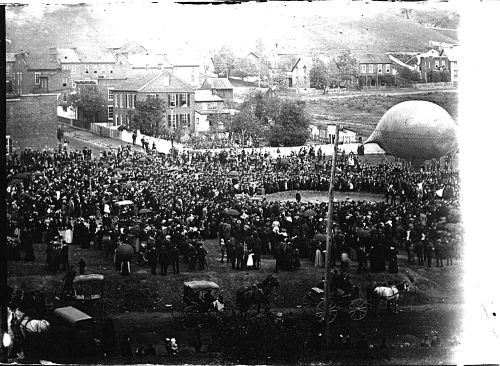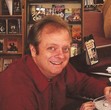James Rada Jr.'s Blog, page 27
April 14, 2014
2 Days left to win a copy of Beyond the Battlefield
My first Goodreads drawing for autographed copies of The Rain Man has ended. Congratulations to the 10 winners randomly by Goodreads from the 1,751 people who entered. I have to say that it was easy enough to do. Goodreads sent me the list of the winners once the giveaway ended. I’ll be sending out the copies tomorrow. The second stage is that, hopefully, these winners will read the book and post reviews on websites and blogs.
For anyone interested, I have another giveaway going on for my newest book, Beyond the Battlefield: Stories from Gettysburg’s Rich History. There is still time to enter. The giveaway ends on Wednesday. Just follow this link and enter:
Goodreads Book Giveaway
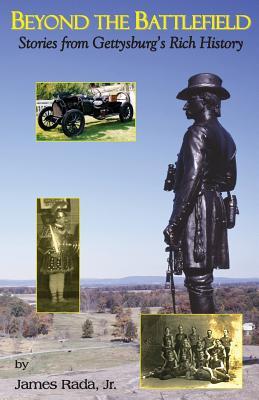
Beyond the Battlefield
by James Rada Jr.
Giveaway ends April 16, 2014.
See the giveaway details
at Goodreads.


April 10, 2014
Ward Hill Lamon Offers to Arrest Maryland Congressman
 Originally posted on Abraham Lincoln and the Civil War:
Originally posted on Abraham Lincoln and the Civil War:
April 10, 1864
U.S. Marshal Ward Hill Lamon writes President Lincoln from New York: “I see by this morning’s papers that Mr. [Benjamin] Harris Member of Congress from Md on yesterday not only declared himself in favor of recognition of the southern Confederacy “but acquiesced in the doctrine of Secession’!”
Is not this giving “aid countenance, counsel and encouragement” to the rebellion? Can your Administration afford to discriminate between traitors who are members of Congress and those who are not–?–
Does not such language this boldly and defiantly uttered give hope to the Rebels and encouragement to the disaffected in the North who are only restrained from using similar language, and an open resistance to the Administration of the Government by the fear of punishment–? Pass silently by such conduct of prominent traitors and very shortly this Country will reverberate treason throughout the North as well as South — and…
View original 209 more words


April 8, 2014
Maryland’s lost silver mine
For more than a century, rumors have persisted in Carroll County, Md., of a lost treasure. Most versions of the story say it is a hidden silver mine, but at least one version of the story says that the treasure is gold bullion stored in a cave.
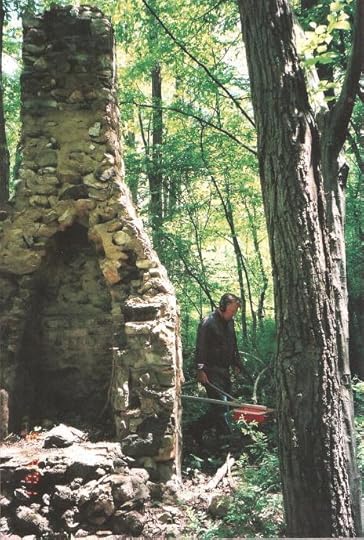
Wayne Naylor hunting for the lost Silver Run mine.
Either way, the treasure has eluded hunters, leaving residents split over whether it ever existed.
Ahrwud’s Mine
The story of a silver mine in the Silver Run area of Carroll County supposedly dates back to the late 1750’s when a German silversmith with the last name of Ahrwud settled in the area. The legend is that Ahrwud made friends with the local Indian tribe who knew of the location of silver, which they used for trading, but they admired Ahrwud’s craftsmanship.
“In return for all the silver he could possibly use, Ahrwud fashioned silver artifacts such as eating utensils and idols for the Indian tribe’s use,” Michael Spaur wrote in an article in the Frederick News.
Though Ahrwud was allowed access to the silver, he was led there in secret at night. The silver was being mined from within a natural cave that had a hidden entrance. The hill where the cave is located is said to be Rattlesnake Hill at Silver Run.
Ahrwud’s daughter, Frieda, pressured him to tell her where he got the silver he used in his work and finally one night, he gave in. He blindfolded his daughter and led her to the mine. Not only was she amazed to see the silver veins, but she had managed to mark the trail while being led to the mine.
Frieda returned during the day with a friend and they mined some silver for themselves. This excursion was seen by a member of the tribe who reported it to his chief. Angry, the Indians kidnapped Ahrwud and his daughter and killed them in the mine. They then caused a landslide that sealed the entrance.
The search for the mine appears to have begun not long after the Ahrwuds’ disappearance and yet, it has never been found or at least reported found by anyone.
The Hunt Begins
A Carroll County newspaper, The American Sentinel, reported that in 1868, a slightly different version of the story had been told to the editor. In that version, the Indians did not kill the Ahrwuds and Frieda did not attempt to find her trail markings until after her father died without telling her the route. However, she was never able to find the path.
This version added another clue to the map forming to locate the mine, which was that Frieda remembered having crossed a small stream just before she and her father had reached the mine.
The editor also wrote, “The above was related to us in 1868 and generally believed to be true by the greater portion of the citizens. Many shafts and holes were dug without success.”
In 1883, the Hanover Spectator stated that the tunnel of an old mine may have been located on Rattlesnake Hill, though nothing was noted about a find.
One report states that Josiah Myers of Hanover, Pa., believed that he had found the shaft to the old mine in 1875. He tried to restart the mining operations, but was killed in a cave in on August 15, 1876. No apparently tried to restart his work of they did and didn’t find anything for the mine continued to stay lost.
In trying to locate the mine, many hunters have sought to verify different elements of the story in the hopes of narrowing down a location, such as where exactly did Ahrwud live. No one is sure where this is, though, or if anyone named Ahrwud did live in the Silver Run area.
However, the Susquehannock tribe of the Oepowig Indians was known to live in the area. The area was also settled by German immigrants, though no family name of Ahrwud is known nor were any of the settlers known to be silversmiths.
Buried Gold
Wayne Naylor was a treasure hunter who always wanted to find the big strike that would justify all of his time hunting. While he found coins and other items from sites around the country, he always felt that the big find was the one that was closest to him and that always eluded him.
Naylor met Carroll Countian Gene Dell during a hunt in Roanoke, Va. and the two became friends. When that friendship became trust, Dell showed Naylor some family papers that put the Ahwrud’s Mine story in a different light.
“Written on a large piece of ledger paper was a story that had been handed down to Dell’s grandmother by her grandmother,” Michael Spaur wrote in the Frederick News in 1980. Naylor’s best guess is that the account was written down about 150 years ago.
On the ledger page was a story about a woman named Earwood. As a young girl, she had been blindfolded by her father and taken to a cave where she was show gold ingots. The story placed the gold near Deep Run, which is a couple miles east of Silver Run. It even had a couple more clues as to the whereabouts, such as there being a broad, flat rock only a few feet from the entrance to the cave or that the on way to the cave, the carriage had crossed a stream near Rattlesnake Hill that had had a large outcropping of greenish rock. However, when the woman’s father died, she was unable to find the cave.
While gold ingots might be a little less believable than silver, there was an Earwood family who lived in Carroll County.
Dell had recognized the similarities between the two stories and began his own search for the treasure, not caring whether it was silver or gold. He leased land in the town and dug in promising spots. He used metal detectors and even dynamited in search of the treasure.
After Dell died in 1975, Naylor inherited his papers.
Naylor, who is now 69, spent years researching clues about the area and in the account. When he would think he had something, he would take his large metal detector out to he area and try to verify it.
“I don’t think I ever believed in it, but it was a chance at some big money,” Naylor said. “I would look, but it was such a large area, it would be easy to miss.”
He said he would run into other treasure hunters searching for the silver mine, but he wanted to find gold.
“I never located where the old man would have lived and that was key,” Naylor said. “I don’t think the mine would have been too far from there.”
Despite all of the looking, nothing has been found so far. That doesn’t stop people from hunting or believing.
“It’s fun looking for something buried so long ago and to be able to say that you found something,” Naylor said.


April 5, 2014
Forgotten flight: the lonely voyage of Apollo 6, and the terrible day it happened.
 Originally posted on www.seanmunger.com:
Originally posted on www.seanmunger.com:

Forty-six years ago today a rocket blasted off from Cape Kennedy in Florida, orbited the Earth three times, and splashed down 10 hours later in the Pacific Ocean north of Hawaii. No one was on board. This flight was known as Apollo 6, and was one of the unmanned test flights conducted by NASA in its run-up to the manned missions that would eventually take human beings to the Moon. The main purpose of the flight was to test whether the spacecraft could withstand the major rocket burn of a “trans-lunar injection”–the blast from its engine that would send it toward the Moon–and whether the space capsule could successfully re-enter the Earth after such a maneuver. Apollo 6 proved that it could.
The day on which the flight happened, April 4, 1968, was a good day to leave the Earth. For reasons that had nothing to do with Apollo 6…
View original 625 more words


March 20, 2014
Adams County celebrates 150 years
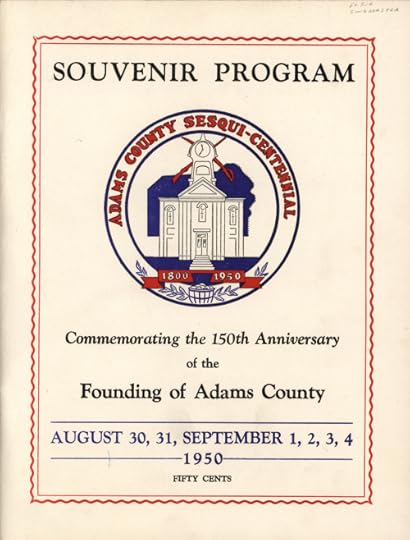
The program from the Adams County Sesquicentennial pageant in 1950. Courtesy of the Adams County Historical Society.
On a hot evening in July 1948, a group of Adams Countians met in a room that was made even hotter by the presence of so many people. The air conditioning was cranked up and everyone got down to the business of planning a celebration of Adams County’s sesquicentennial. The committee had been formed at the suggestion of the Adams County Historical Society.
“Anniversary celebrations are both entertaining and informative,” wrote Leighton Taylor, chairman of the Adams County Sesqui-Centennial Association. “They promote good will and fraternalism, encourage enterprise and initiative, and create a just and pardonable pride in progress and achievement. Moreover, with subversive elements trying to destroy our American Way of Life, we need a revitalization of our patriotism and love of country. This we think can be done most efficiently by reminding Adams Countians, in dramatic and colorful presentations, of their free institutions, their exalted and favored position as American citizens, and of the unparalleled progress made by them and their forebears during the County’s 150 years.”
Brothers of the Brush
With two years of planning, Adams Countians began noticing something different during the summer of 1950. “The rumor that there is a razor blade shortage was spiked Tuesday. … beards, goatees, mustaches, and sideburns have begun to sprout on manly countenances as countians join in the spirit of things by permitting the facial hair to grow freely,” the Gettysburg Times reported on August 5th.
The men had joined the “Brotherhood of the Brush” in preparation for the county’s 150th birthday party. The men had agreed not to shave their beards for a month. At the end of the celebration, prizes would be awarded for most-luxuriant beard, best full-face beard, blackest beard, reddest beard, grayest beard, most-typical beard and best old-time costume with matching beard. A special award was also given for the man who tried his hardest to grow a beard and failed.
Harold Ecker was a young man in his 20’s at the time of the celebration. Besides participating in some of the events during the sesquicentennial, he was also a Brother of the Brush.
“I went to Atlantic City while I was growing a beard and someone wanted to know if I was a Jewish rabbi,” Ecker said. He eventually won second place for the reddest beard.
The Brothers of the Brush paid 50 cents for a badge that explained why they weren’t shaving. Shaver’s permits were also sold for $1 that gave them permission to shave. During the sesquicentennial celebration a Kangaroo Court was also set up to fine any male who was caught shaving without a permit.
The 50 participants showed up at the county courthouse on September 2 to have three Gettysburg barbers judge their beard-growing efforts during August. Some of the men had trimmed their beards in unique ways or added large rubber noses or other features to their faces. More than 2,000 people showed up to watch the judging. “So large was the audience that it nearly overwhelmed the ‘Brothers of the Brush’ and the judges and practically blocked traffic on Baltimore Street,” the newspaper reported.
While the whole thing was a fundraiser for the sesquicentennial, it was also fun for the participants and even the barbers.
“Barbers had a ‘field day’ harvesting the Brothers of the Brush following the parade Saturday,” the newspaper reported. “Most in mock seriousness asked the bearded contestants how long they had been growing the beard, asked how often they shaved, and then threatened to charge 50 cents for each and every shave that had been missed. All finally settled for 50 cents for one shave.”
The Parade of Progress
The sesquicentennial celebration covered five days with each day filled with events and having a different theme. “Adams County’s biggest birthday celebration ever came in its 150th year,” the Gettysburg Times noted in 1975.
The party began on Wednesday, August 30 with Queen’s Day. The other days’ themes were: Patriotic Day, Youth Day, Adams County Day and Freedom of Religion Day. Each day, other than Freedom of Religion Day” featured its own themed parade.
The festivities began on Wednesday, August 30 at 10 a.m. with an “aerial bombardment” as the program described it. Everyone on Adams County was encouraged to blow whistles and honk car horns. Churches range their bells.
More than 10,000 people turned out to watch the “Parade of Progress” on Saturday, September 2. It was billed as one of the largest parades in the county’s history with 34 floats “representing practically every possible scene in the county’s history,” according to the Gettysburg Times. Old cars, buggies, costumed participants and 14 bands and drum corps also participated in the parade.
“Back then, we had some beautiful floats in the parade,” Ecker said.
The Littlestown Rotary Club won the $100 top prize for the best float. “The wigged and costumed persons on the float danced the minuet while others played the harpsichord and violin as the float passed the judges’ stand on Lincoln Square,” the newspaper reported.
The Gettysburg Exchange Club won second place with a four-unit float that portrayed the history of Adams County including Mr. and Mrs. James Getty following up in a buggy. Lincoln Logs placed third with a replica of a log cabin on their float with Bernard Fraser playing Abraham Lincoln.
Roland Kime participated in the parade with the Senior Extension Club. “We were on the bed of a truck square dancing,” Kime said. The Senior Extension Club also performed square dancing demonstrations throughout the celebration.
Things were so busy on Saturday night that the newspaper report noted that it took 45 minutes to drive through town.
Freedom’s Frontiers
The keystone event of the celebration was the performance of “Freedom’s Frontiers.” It was an original 20-scene theatrical performance that featured a cast of 500 in historical costumes acting out the history of Adams County. It also featured ordnance supplied by Letterkenney Army Deport. The show played four nights of the celebration. Each performance filled the Gettysburg College stadium.
George Sipes was a sixth-grade student living in East Berlin who also played one of the 16 students in an early classroom scene in the pageant.
“We just sat in a classroom and didn’t say a word,” Sipes said. “We never even got to see the play. As soon as we were done, we got in a car and left.”
Sipes said that Archie Himes, the man who played the teacher in his scene, knew the boys from around town and sports games. He gathered them together one afternoon and asked, “Who wants to be in a play in Gettysburg.” A few of the boys raised their hands and they were immediately cast. Luckily, they also didn’t need to do any rehearsals for their part either.
Donald Ullery, executive secretary of the Adams County Sesqui-Centennial Association, wrote after the celebration that “a large, curious group of people gathered to witness the display.”
Other events
During the days, visitors could walk the main streets of most of the towns in the county and view historical displays in business windows. The businesses were competing for prizes and Thomas Brothers Department Store in Biglerville won the top prize. The display “contained authentic items of a country store of many years ago, according to the judges,” the newspaper reported. You could see a pot-belly stove with a live cat sleeping next to it as well as a cracker barrel.
You could also watch historical vignettes performed in various towns. Ecker’s wife and daughter dressed in costume to perform in one near the St. James Lutheran Church in Gettysburg. He said that they performed every three hours or so during the day.
Children and adults could enjoy midway games and sports at Gettysburg College.
Visitors purchased wooden nickels that could be used as cash during the celebration, but apparently none of the 10,000 wooden nickels that had been sold were ever redeemed.


March 11, 2014
Read about Gettysburg’s forgotten history
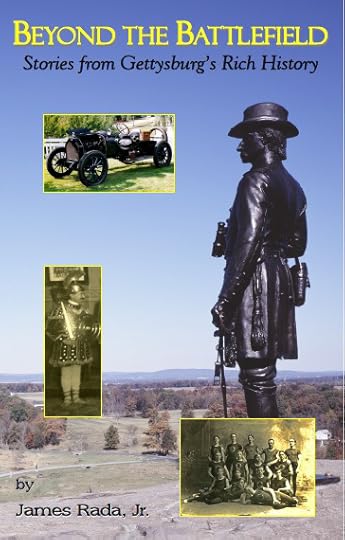 Home to a U.S. president, Hall of Fame pitcher and a classic automobile inventor, there’s so much more to Gettysburg than just a three-day battle.
Home to a U.S. president, Hall of Fame pitcher and a classic automobile inventor, there’s so much more to Gettysburg than just a three-day battle.
Sure Gettysburg is best-known for the epic Civil War battle that was fought there in 1863. It tends to overshadow many of the other interesting and important stories that have taken place in Gettysburg and the vicinity.
Gettysburg was also home to one of the first tank training camps in the country during World War I. This camp brought a young army officer to Gettysburg who would play a very important role in town but also the world. His name was Dwight David Eisenhower.
Hall of Fame pitcher Eddie Plank called Gettysburg home. He even owned a garage in town after he retired.
Gettysburg is filled with stories of the famous and the not so famous, the curious and the cute, the mysterious and the deadly. Together they will tell you the story of a Gettysburg that you don’t know. It is a town with a rich history that spans many years before and after the Civil War.
Now you can read the stories of Gettysburg that stretch beyond the battlefield in my new book, Beyond the Battlefield: Stories from Gettysburg’s Rich History. It’s a collection of 46 stories and 56 pictures that show you the side of Gettysburg’s history that you don’t often read about.
You can get a copy here or check with your favorite bookseller about ordering one.


February 23, 2014
Allegany County partied like it was 1789
In 1789, Washington County gave birth to Allegany County. It had some settlements in it at the time, but by and large, the area that would become Allegany County was a frontier. The preamble of the act from the Maryland General Assembly that created Allegany County read:
“Whereas, A number of the inhabitants of Washington county, by their petition to the General Assembly, have prayed that an act may pass for a division of said county by Sideling Hill Creek, and for erecting a new one out of the Western part thereof; and it appearing to this General Assembly that the erecting such a new county will conduce greatly to the due administration of justice, and the speedy settling and improving the western part thereof, and the ease and convenience of the inhabitants thereof…”
It didn’t stay a frontier, though. Year after year, it grew as people moved westward in search of land and opportunity.
When the county turned 100 in 1889, the residents decided to celebrate their centennial with a three-day celebration.
The Cumberland Times previewed the celebration reporting, “This will be a grand affair-one which will not only be a pleasant reunion of friends of former years and of relatives, but one which will result in some benefit to the county generally, and bring the name and resources of Allegany more prominently before the country at large. Our city will be gay with rich bunting streamers, flags and other decorations. Every one is anticipating a good time and Cumberland will do its best to make it a joyful and pleasant occasion for all visitors. Come and help us celebrate our 100th birthday!”
Cumberland residents were encouraged to decorate their homes, particularly those homes along the grand parade route, so that the city would look decked out for a party. “It is hoped that every family and place of business throughout the town, whether on the line of parade or not, will put up flags, bunting and other decorations to brighten up our city, so that strangers and visitors may see what Cumberland can do when all take an interest. Let every one do something towards decorating, and our city will present a fine appearance,” one advertisement read.
The Georges Creek Railroad planned to run excursion trains between Lonaconing and Cumberland to bring people into the city for a reduced fare. The Cumberland and Pennsylvania Railroad did the same thing for county residents in the Westernport area. People outside the county could purchase special fares on the Baltimore and Ohio Railroad and the Pittsburgh and Connellsville Railroad to visit Cumberland for the party.
The celebration was spread over three days–September 23-25, 1889–in Cumberland.
The first day featured a massive parade of school children from around Allegany County. Just about every school sent a group to represent their school. The divisions featured: 1) special guests and the day’s speakers, 2) private schools and schools outside of Cumberland, 3) Cumberland schools and 4) “colored” schools. The parade route was about three-quarters of a mile long and ran from Union Street to the county courthouse.
The second day of the celebration had a parade of county tradesmen and a daring leap from a hot air balloon. “Prof. J W Foust, of Lewisburg, Pa, was the aeronaut, and sat on the trapeze until hundreds of yards high in the air, when he jumped to the ground supported by a parachute, alighting along the Baltimore and Ohio road near the weigh scales, about five hundred yards from the Queen City hotel. The balloon proper turned over in the air, the hot air escaped and it descended some distance further on. Prof. Foust was heartily congratulated by the thousands of spectators on the success of his feat. The balloon was in the air about five minutes,” Cumberland Times reported.
According to most reports, the balloon reached around 5,000 feet, but the professor jumped with his parachute around 1,000 feet.
Rain fell on the second day of the celebration, though most activities continued. The fireworks display and boat parade had to be postponed to the finale day.
The newspaper described the boat parade on the final day. “The boat parade on the Potomac, under the management of A H Dowden, took place about 8 o’clock. The steamer Endeavor started up the stream from near the dam with the Electric Cornet Band on board playing familiar airs that were exceedingly pleasant to the ear as the strains were wafted over the waters. When reaching Lynn’s wharf the boats were swung into line and then formed four and five abreast with lanterns swaying to and fro, the reflected light in the waters beneath continuing an uninterrupted circle of brilliancy and oscillating illumination that was attractive to the eye and pleasing in its novelty. Down stream the boats glided, the movement in keeping with the time of the music, and as the night was dark as Erebus, the contrast made a picture that seemed ideal rather than realistic, and placed the parade in the memory of the visiting populace as one of the features of the Centennial celebration.”
The parade featured that day, though, was a military and civic parade led by U.S. President Benjamin Harrison. The newspaper headline described the parade as “An Unbroken Column in Soldierly Attire, Secret Orders in Beautiful Regalia, Bands, Fire Companies, Floats, and Carriages.” The reporter then went on to note, “it occurred to many that the presence of the President of the United States upon this historic spot was a fitting link to bind the events of a little over a hundred years ago, when George Washington, the first President of the United States, stood upon the same ground, then almost a barren waste, to the new century of the county’s existence about to begin.”
Saving Memories
Following the celebration, Col. Theodore Luman, who was the vice chairman of the Centennial Celebration General Management Committee, collected souvenirs, artifacts, ribbons, the Centennial edition of the Cumberland Times, medals and photos in a box. “The box will then be hermetically sealed and placed in the vaults of the Court House, there to rest until 1989,” according to the newspaper report.
Sometime during the next century, the box must have been moved from the courthouse. It wasn’t opened in 1989, nor was its disappearance even noticed.
The staff of the Allegany County Public Library found the box in 2002 as preparations were being made for renovations to the main library branch building. No one had ever seen it before that time, but it had Luman’s name on it and a special piece of the county’s history inside of it.
For more information and images of the county centennial, visit Western Maryland’s Historical Library at http://www.whilbr.org.


February 9, 2014
Win a free copy of The Rain Man!
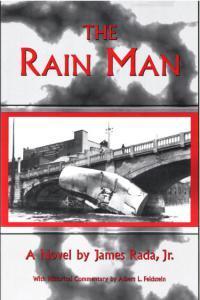 To celebrate the release of the Kindle edition of The Rain Man, I am giving away 10 autographed copies of the paperback edition. It’s free to enter. Just visit this link and click to enter.
To celebrate the release of the Kindle edition of The Rain Man, I am giving away 10 autographed copies of the paperback edition. It’s free to enter. Just visit this link and click to enter.
Here’s the story:
Raymond Twigg hates the rain because it gives the Rain Man power. It is a power to bring Raymond to his knees or drive him to deadly action.
As the March 1936 rains bring the St. Patrick’s Day Flood, the worst flood ever seen in Cumberland, Maryland, it also unleashes the power of the Rain Man on the citizens of the city.
While most of the police force is diverted trying to deal with the flooding in the city and the problems it is causing, Sergeant Jake Fairgrieve is called out to investigate a murder. Murders are unusual in Cumberland, but this one is more unusual than most. The dead man’s head has been crushed on the left side with no apparent weapon and the body is laid out on the street as if it was in a casket.
Jake throws himself into tracking this murder with no motive. The search keeps him from having to deal with his own fears about the approaching flood until he comes face to face with the Rain Man.
With the Jake trailing him, the Rain Man turns from hunted to hunter. He kidnaps Jake’s girlfriend, Dr. Chris Evans. In order to save Chris, Jake will have to face his own fears and the Rain Man in the flooded streets of Cumberland where the Rain Man is at his most powerful.
Good luck! I hope you win!


February 6, 2014
A Wonder of Natural Resources: West Virginia at the 1893 Chicago World’s Fair
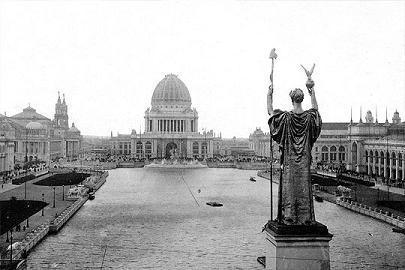 When Dorothy, the Scarecrow, the Tin Man, and the Cowardly Lion first enter Emerald City in The Wizard of Oz, they are awestruck by the wonders that fill the city. The scene is based on author L. Frank Baum’s memory of how he felt when he visited the 1893 Chicago World’s Fair. The first World’s Fair featured innovations like the Ferris wheel, alternating current electricity, the first commercial movie theater, and a moving sidewalk. Attendees were also introduced to the hootchy-kootchy dance and a new-fangled clothing option: the zipper. Planned as a celebration of the 400th anniversary of Christopher Columbus’s arrival in the New World, the fair became an exploration of the American Spirit throughout history and into the future.
When Dorothy, the Scarecrow, the Tin Man, and the Cowardly Lion first enter Emerald City in The Wizard of Oz, they are awestruck by the wonders that fill the city. The scene is based on author L. Frank Baum’s memory of how he felt when he visited the 1893 Chicago World’s Fair. The first World’s Fair featured innovations like the Ferris wheel, alternating current electricity, the first commercial movie theater, and a moving sidewalk. Attendees were also introduced to the hootchy-kootchy dance and a new-fangled clothing option: the zipper. Planned as a celebration of the 400th anniversary of Christopher Columbus’s arrival in the New World, the fair became an exploration of the American Spirit throughout history and into the future.
Chicago won the right to host the first World’s Fair, besting New York City; Washington, D.C.; and St. Louis. New York architect Daniel Burnham and Connecticut landscape architect Frederick Law Olmsted designed the exposition to be the ideal city on the southeastern shore of Lake Michigan near Chicago, Ill. Often called the “White City,” the exposition featured large pavilions designed in the French neoclassical style ringed artificial lakes on 630 acres. The wonders of the age were on display both inside and out of the buildings.
“The White City was the zenith of this civic awakening, and its full significance cannot be appreciated without grasping this connection. Built by Chicago’s elite, the White City was their vision of what a great city could be like at a time when the country’s large cities were almost universally thought to be ugly, disorderly, dangerous, and ungovernable. Passing from the ‘cluttered ugliness of the city itself’ to the orderly magnificence of the White City, many fairgoers believed—or at least hoped—they were seeing the American metropolis of tomorrow,” history professor Donald Miller wrote in American Heritage magazine.
Before this vision came to be, it had to be built. Companies across the country submitted bids for the work that needed to be done and other people flocked to the area looking for work. West Virginians could be found among them.
The History of Hampshire County notes that 20-year-old Francis M. Alderton of Chicago, a native of Hampshire County, worked as an overseer for a portion of the exposition grounds.
Edward Drummond Libbey of the New England Glass Company, who had a contract to make glass windows, fixtures and light bulbs for the fair, traveled to the Hobbs & Brockunier Glass Factory in Wheeling to enlist skilled workers to help with the job.
One of the workers he found was Michael J. Owens who had worked in the glass industry since he was age 10. “Libbey felt Owens displayed the leadership skills needed to manage his new factory and hired him. Owens supervised the Toledo plant, and also a glass plant in Findlay that made light bulbs for the new electrical industry,” according to the University of Toledo Ward M. Canaday Center for Special Collections.
When the Libbey Glass Company got a $200,000 contract to build a working glass furnace at the fair, Libbey put Owens in charge of the exhibit.
“When it initially failed to draw crowds, Libbey decided to allow visitors to apply their admission fee to the purchase of glass trinkets inscribed with the company name. The exhibit became a huge draw, with many coming to see a dress sewn for Broadway actress Georgia Cayvan made of spun glass. Spun glass, which would eventually become the basis for a major new glass company in Toledo in the late 1930s, was a brand new technology for the time pioneered by Libbey’s company,” according to the University of Toledo Ward M. Canaday Center for Special Collections.
As construction proceeded and the grand opening of the fair approached, states and other countries made plans for displays even more impressive than Libbey’s. On March 14, 1891, the West Virginia Legislature formed the five-person Board of World’s Fair Managers of West Virginia. The board’s job was to create and oversee a display that showcased West Virginia’s resources, products, and general development.
Because coal was a major resource in the state at the time, the board wanted an extravagant display that would shine amongst coal displays from other states. Back then, the Big Vein Coal Seam in the northern part of the state, where West Virginia meets Maryland, was 14-feet wide along much of its length. Its clean-burning, low-sulfur, bituminous coal was popular for powering ocean liners, riverboats, locomotives, and steam mills (grinding mills powered by steam engines). The members of West Virginia’s World’s Fair board wanted to show the world how impressive the coal seam was.
In his memoir, coal miner Kenny Bray wrote, “My grandfather and some other men were assigned to take out a section of the coal to be displayed at the Chicago Exposition in 1893. They wanted to display it as it appeared in its natural setting before being mined. He said the coal could not be mined in one piece because it would be too large to handle, so they dug it out in four large pieces that could be reassembled outside to appear in its natural formation.” The coal sections were then crated up and shipped off to be reassembled in Chicago as part of the West Virginia exhibit.
The World’s Fair opened to the public on May 1, 1893, and featured 200 buildings, canals, lagoons, and other structures. It lived up to its “White City” moniker. People came from all over the world to admire the grandeur, reacquaint themselves with history, and get a glimpse of what the future might hold.
Different days had various themes, and certain days were dedicated to each of the states. West Virginia had two days dedicated to it: June 20 and August 23, the latter of which it shared with Delaware.
On June 20, 1893, the 30th anniversary of West Virginia’s admission into the Union, the stately West Virginia building at the fair was dedicated. The Wheeling Intelligencer described the building this way: “It is built of West Virginia material in colonial style, and cost the state the sum of $20,000. There are no exhibits in it of the state’s resources, the building being erected with an especial view of furnishing a headquarters to West Virginians while visiting the fair. It is a pleasant home, and all citizens of the state will be heartily welcomed within its walls, where they will find pleasant resting places and polite attendants to look after their wants and furnish information. There are a number of interesting relics to be found in the building, among which are the chair and safe used by Lee in writing his terms of surrender to Grant, and several John Brown relics. The state’s industrial exhibits will be found in the main buildings of the fair.”
Of the building’s dedication, the Intelligencer reported, “The building was not decorated and the exercises were simple, but appropriate. The building was crowded all day with West Virginians and people from other states, fully 2,000 visitors calling during the day. When the ceremonies opened, the assembly hall was packed. It presented a handsome appearance, being draped with flags of all nations, and bunting.”
Though Gov. William A. MacCorkle was scheduled to give a speech, he was unable to attend. In his place, Gen. J. W. St. Clair addressed the crowd “with a speech full of eloquence and patriotism,” noted the Intelligencer. In addition, Archibald W. Campbell, former editor of the Intelligencer and an outspoken and influential leader in the statehood movement, spoke about the state’s achievements in railroad construction, coal mining, lumbering, petroleum drilling, riverway improvement, and education.
Of Campbell’s speech the newspaper opined, “No man is more competent than Mr. Campbell to handle the subject, for none is more familiar with the history of which he took so prominent a part in forming. It was a splendid and instructive address, and listened to with profound attention.”
Besides noted speakers, the program included vocal and instrumental musical performances. Kurnie Smith of Parkersburg whistled “The Mocking Bird” and “delighted the large audience beyond expression,” according to the Intelligencer.
The second West Virginia Day featured speakers from both Delaware and West Virginia. The length of the program, which included speakers from both states, prompted the Intelligencer to declare, “There were entirely too many speeches.” The newspaper approved of the reception, however, noting that “there was a great spread of peaches, watermelons and other dry and wet refreshments in the assembly room, and everybody did full justice to the lay-out.”
Fair attendance for that day numbered 178,699, of which 147,939 were paid admissions. This tally fell far below attendance on Chicago Day, October 9, when 716,881 people flocked to the fair. During the six months that the fair was open, more than 27 million people attended.
West Virginia won a number of awards at the first World’s Fair. Gov. MacCorkle later told the state legislature, “Our exhibitions of coal and coke in its variety of qualities, purity of kind and thickness of seams was easily paramount amidst the world’s greatest collection. The award of the most-expert judges has forever settled our superiority in this great product. In our forestry exhibit no state in the Union could dispute our first place. Our agricultural exhibit was fine and our collection of oils was easily classed with Pennsylvania and Ohio. Our iron ores, building stone and fire clays were second to none. We received the highest awards for coke, coal and timber. The exhibits of coal and timber were the most-numerously visited and examined of their respective kinds at the World’s Fair.”
Besides showing off the state’s natural resources, West Virginia also touted it achievements in fine arts. Noted artist Lily Irene Jackson of Parkersburg exhibited two large oil paintings, Watching and Waiting and Anticipation, both of which portrayed dogs. In addition, Lewis “Jack” McElwain, a West Virginia fiddler, earned a first-place finish at the fair.
A Lasting Memento
One of the reasons cypress trees are found in West Virginia today is that visitors to Louisiana’s exhibition at the 1893 World’s Fair were given cyprus seedlings to take home. Many West Virginians returned to the state, planted them, and watched them flourish.
Unfortunately, some state residents also brought back something else: smallpox. According to the Biennial Report of the State Health Department of West Virginia 1893/94, “It was supposed that the infection was carried from Chicago, where the disease existed during and after the World’s Fair. The number of cases did not exceed five or six owing in great part doubtless to the promptness of the recognition of the physicians in charge.”
The first World’s Fair proved an economic success for West Virginia. Gov. MacCorkle told the state legislature that because of West Virginia’s participation in the fair, thousands of inquiries were made for land purchases. Land sales spiked and a number of companies also opened in the state.
“The World’s Fair proved to be of incalculable benefit to West Virginia,” Gov. MacCorkle proclaimed.
So many firsts and innovations came out of the fair, it is not surprising that more World’s Fairs would follow, but none has ever achieved the uniqueness and wonder of that first fair. Nor have any of the other fairs had a greater impact on American society.


January 26, 2014
First draft of “Lock Ready!” complete
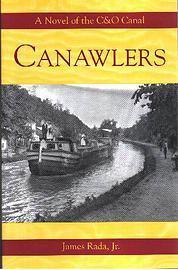 I finished the first draft of my latest historical novel and sent it off to my beta readers. It was a relief to have the project finished, at least this first step. I’m surprised it has taken me so long to finish it. “Lock Ready!” is the third book in the Canawlers series. The second book came out in 2003 so it has been 10 years.
I finished the first draft of my latest historical novel and sent it off to my beta readers. It was a relief to have the project finished, at least this first step. I’m surprised it has taken me so long to finish it. “Lock Ready!” is the third book in the Canawlers series. The second book came out in 2003 so it has been 10 years.
Wow! Typing that made me realize just how long it has been.
It’s not that I’ve haven’t written other things in the interim, but I’ve known the title of the third book in the series since probably 2004. I’ve even had bits and pieces of the story written. Pulling it all together had escaped me, though. Now, I think I’ve finally got it.
“Lock Ready!” continues to follow the Fitzgerald family as they boat on the Chesapeake and Ohio Canal during the Civil War. For those of you who don’t know, the C&O Canal runs along the Maryland side of the Potomac River so it was essentially the border between the North and the South during the war and not a safe place to work.
David Windover, the ex-Confederate soldier, has decided to leave the canal rather than torture himself being near a woman who doesn’t love him. He takes a job in Cumberland and soon become involved with the network of Confederate sympathizers who still live in the city. Alice Fitzgerald begins to wonder if the canal isn’t too dangerous for her family. She misses her dead husband and David and feels torn between them.
As the season progresses, Tony Fitzgerald stumbled onto a plot to sabotage the canal and enlists David’s aid to try and prevent it. This brings the pair face-to-face with both their pasts and unless they can overcome it, canallers will be hurt.
That’s the basics. It’s seems odd that it took me so long to put it all together. I hope you will like the results when it comes out later this year.



